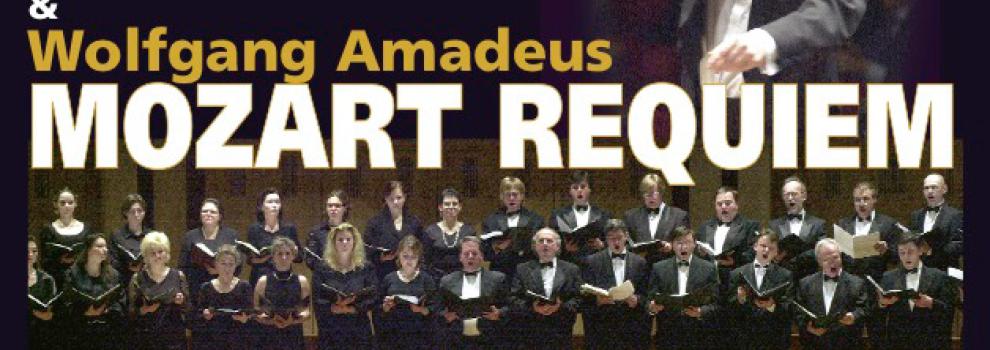
‘Requiem Mozart & Carmina Burana’
Past event
Cancelled
Postponed
28 Jan.'19
- 20:00
Czech Symphony Orchestra & Choir Prague
TWO GIANT MASTERPIECES DURING THE SAME PERFORMANCE
This is the challenge of these musicians coming from Prague who specialized year after year in this specific and grand repertoire. It became a passion. And the way they succeed, also year after year, to capture their audience proves, without any doubt, the Excellency of their performance.
TWO MONUMENTAL CLASSICS FOR ONE EXCEPTIONNAL CONCERT
WOLFGANG AMADEUS MOZART'S FINAL MASTERPIECE was commissioned in mid 1791 by the Austrian count Franz Von Walsegg, as a Tribute to the passing of his young wife Anna. Mozart began his final composition in Prague, suffering from an undetermined illness, which would eventually take his life and rob him of the chance to see the completion of his Magnum Opus.
CARMINA BURANA FROM CARL ORFF: the most famous oratorio in the world. The lyrics were found in 1803 in an old German abbey. Written in Latin, old German and medieval French, they were never translated, but sung over the whole world.
CZECH SYMPHONY ORCHESTRA & CHOIR, PRAGUE ensemble - Petr Chromczak conductor - Monika BRYCHTOVÁ soprano - Dita STEJSKALOVÁ alto - Michal VOJTA tenor - Jakub TOLAS baritone
(subject to changes without prior notice)
THE PROGRAMME
PART 1: WOLFGANG AMADEUS MOZART (1756-1791) REQUIEM, in D, KV 626 (1791)
I Introitus (Adagio)
II Kyrie (Allegro)
III Sequenz:
- Dies irae (Allegro assai)
- Tuba mirum (Andante)
- Rex tremendae
- Recordare
- Confutatis (Andante)
- Lacrimosa
IV Offertorium
- Domine Jesu (Andante con moto)
- Hostias (Andante)
V Sanctus (Andante)
VI Benedictus (Andante)
VII Agnus Dei
VIII Communio: Lux aeterna (Adagio)
Mozart – Requiem
Mozart was a composer for whom his music and his own personal life were usually quite independent. A notable exception is the unfinished Requiem, written at the very end of his life. Listening to the terrifying Dies Irae and the way in which the personal pleas are set to music so movingly, it is virtually impossible not to hear the voice of a dying composer expressing himself. In fact, Mozart himself said that he felt he was writing his own requiem. From the opening bars, the basset horns set the tone of the work with their veiled, dark timbre. Next to the heartbreaking outbursts of the choir and the brass, the horns provide peace and consolation. In Mozart’s time, such a gaze into the abyss of the human soul was unheard of in music. Even Beethoven, years later, still found Mozart’s Requiem “too wild and too terrible”. The harmony and musical colours anticipated Romanticism; the music was quite simply ahead of its time.
PART II: CARL ORFF: CARMINA BURANA Cantiones profanae, cantoribus et choris cantandae, comitantibus instrumentis atque imaginibus magicis
Fortuna Imperatrix Mundi
I. Primo Vere : 3 - 10
Uf dem Anger
II. In Taberna : 11 - 14
III. Cour d’amours : 15 - 24
Blanziflor et Helena
Fortuna Imperatrix Mundi (rep)
Carmina Burana is a scenic cantata composed by Carl Orff in 1935 and 1936. It is based on 24 of the poems found in the medievalcollection Carmina Burana. Its full Latin title is Carmina Burana: Cantiones profanæ cantoribus et choris cantandæ comitantibus instrumentis atque imaginibus magicis (Songs of Beuern: Secular songs for singers and choruses to be sung together with instruments and magic images.) Carmina Burana is part of Trionfi, the musical triptych that also includes Catulli Carmina and Trionfo di Afrodite. The first and last movements are called "Fortuna Imperatrix Mundi" (Fortune, Empress of the World) and start with the very well known "O Fortuna".
In 1934, Orff encountered the text in the 1847 edition of the Carmina Burana by Johann Andreas Schmeller, the original text dating mostly from the 11th or 12th century, including some from the 13th century. Michel Hofmann (de), then a young law student and Latin and Greek enthusiast, assisted Orff in the selection and organization of 24 of these poems into a libretto, mostly in Latin verse, with a small amount of Middle High German and Old Provençal. The selection covers a wide range of topics, as familiar in the 13th century as they are in the 21st century: the fickleness of fortune and wealth, the ephemeral nature of life, the joy of the return of Spring, and the pleasures and perils of drinking, gluttony,gambling and lust.
Practical information
Dates
Location
Henry Le Boeuf Hall
Rue Ravenstein 23 1000 BRUSSELSProduction
- B.T.B. sprl/bvba – Etienne Briclet
Collaboration
- ILC Entertainment bvba